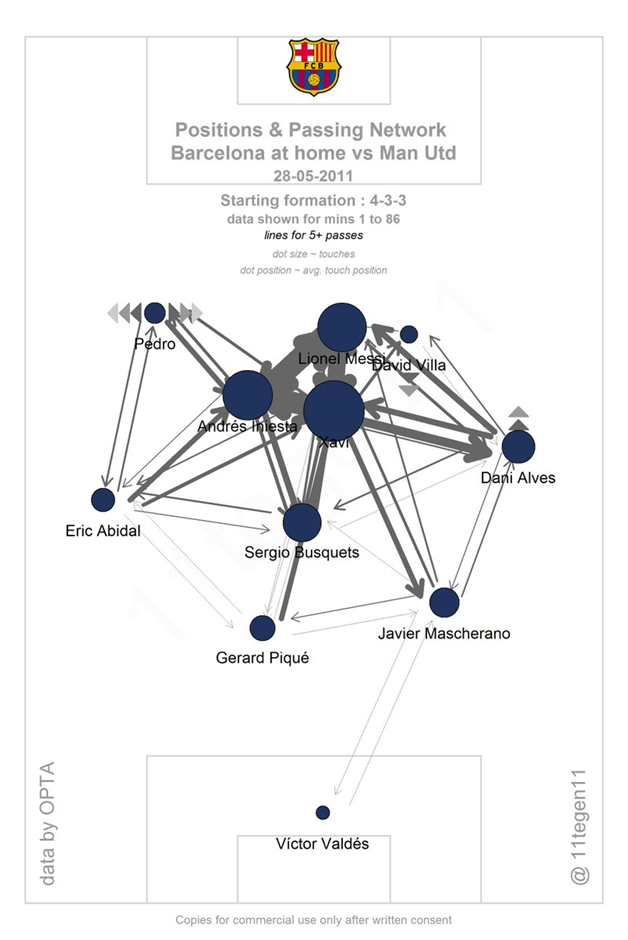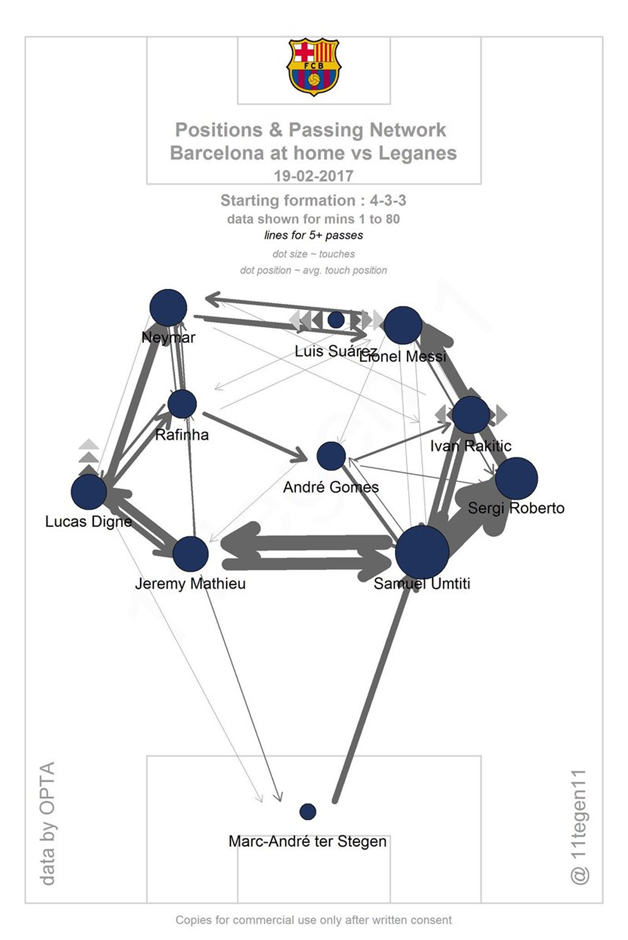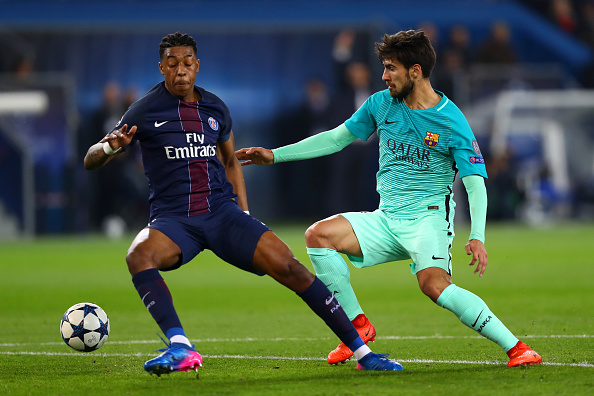Hiko Seijuro writes about the recent decline that has been noticed at Barcelona.
FC Barcelona stand as a colossus of the modern game; they’ve more or less ruled the footballing world from the time of Johan Cryuff as a manager until now giving us trophy upon trophy and a brand of football as beautiful as anything ever seen in the beautiful game; usually a footballing cycle takes two or three years before it peters out but Barcelona have shown a remarkable level of consistency since they retook their European crown back in 2006 under Frank Rijkaard. However, all good things must come to an end and it seems that like the ancient Roman Empire, the footballing empire of FC Barcelona is falling and its time of world domination is coming to an end.
They managed to overcome PSG, they are still top of La Liga at the time of writing, even though arch rivals Real Madrid have a game in hand, and have made it to the finals of the Copa Del Rey. You could be forgiven for thinking things weren’t so bad and that I’m overreacting; however, to a Barcelona fan, we are not like any other mortals that play the beautiful game, we are “Mes Que Un Club” more than a club and a departure from the ideals that made us a great is tantamount to making Barcelona “Unbarcelonan”. This “fall” is not the result of one stumble or simply hitting a leg against a stone, however, you could say, it has been a long time coming. A series of missteps and slips have led Barcelona to this point and this article will seek to dissect these issues and see if there is a way forward for La Blaugrana.

La Masia
FC Barcelona’s fabled youth system has churned out some of football’s best and brightest over the years with names like Pep Guardiola, Xavi Hernandez, Victor Valdes, Gerard Pique, Andres Iniesta, Cesc Fabregas and of course the best in our generation, Lionel Messi. However, the Catalan football factory has ceased production in recent times with the club looking more and more to outside talent for reinforcements than letting youngsters come up the ranks. Even the ones that show promise are shipped off on loan to continue their development elsewhere or sometimes even sold out with buy back clauses. It is almost as if the Barcelona hierarchy no longer confident in the ability of La Masia to produce players good enough to wear the Barcelona shirt.
The successes of the first team have masked the problem at the grassroots for some time now, however, Johan Cryuff, Barcelona’s spiritual father and the man who “painted the chapel” in the words of Pep Guardiola recognized that something wasn’t quite right even when Barcelona won the treble in 2015.
Barcelona’s successes domestically and in Europe in the last decade have been built on a strong foundation of La Masia graduates. The famous academy provided the base of Pep Guardiola’s all conquering Barcelona, a team seen b y many as one of if not the best club team in the history of football, the coach himself a product of La Masia. La Masia became synonymous with technical excellence par none and more and more gems came springing up. This was the reason why Barcelona were known as a “building club” rather than a buying club which was how their competitors a la Real Madrid sought to achieve success. However, for the past few years, Barcelona have firmly become a “buying club” with La Masia relegated to the background as just as afterthought. Two pieces of business bear out this reality perfectly: the first is the loan deal of Sergi Samper to Granada, a player seen by many within the club as the natural heir to Sergio Busquets and then the transfer of Munir to Valencia in a deal that saw Paco Alcacer go the other way. This is in particular a move that hasn’t been justified as Alcacer hasn’t quite matched Munir’s exploits for Barcelona, scoring only three goals so far this season.
The problem isn’t just in the neglect of the academy, but also in the emphasis of the leadership; Barcelona were previously more interested in building players than in the results at least in their B team, now the emphasis has changed from player development to strictly winning at all costs. An unnamed La Masia official who spoke with Goal.com said: “Cruyff always asked how we had played. He never asked about the result……..These days they look for strong players, not talented ones. Barca B play to win and they do so with footballers who aren’t at the age of players in development and that is cheating”. So Barcelona have abandoned one of the core principles that made them great, no wonder they are in so much trouble.
“When the foundation is destroyed, what can the righteous do?” – Psalm 11:3
The foundation at FC Barcelona is in decline, and unless something is done to shore it up, the super structure will crumble and will take some time to be restored to its former glory.
Tactical Decline
In the previous years when Barcelona have reigned supreme, from the building of the cathedral by Johann Cryuff to the perfection of it by Pep Guardiola, one thing has remained constant: the midfield has reigned supreme. During Cryuff’s time, it was Guardiola, Stoikhov and Amor bossing the central areas, under Guardiola it was the Spanish triumvirate of Busquets, Xavi and Iniesta that set the world alight. Unrivalled midfield and territorial dominance propelled the Blaugrana to 14 trophies in just 4 years. Under Luis Enrique however, what started out as a little tweak, a little acceleration of the play to allow their devastating front three to make use of gaps in the opposition defense during transition moments before the opposition has the time to settle into their defensive shape has grown into a full blown departure from the Barcelona tradition, the midfield is being consciously bypassed and is made increasingly irrelevant. The central midfielders now play more as wide players than as midfielders and Busquets is being increasingly isolated in the pivot position. Of course this tactic allows Barca to reach their front three a lot faster than taking methodical routes to goal via build up, sometimes even depending on long balls to Luis Suarez to directly attack the opposition from their own half; the perfect example of this was their 2:1 win over Real Madrid at the Camp Nou in their treble winning season, Dani Alves simply played a lofted ball to Suarez who rode Pepe’s challenge to slot home the winning goal. Such moves however, in the early days of Luis Enrique’s tenure were few and far between, a plan B; now, they are the norm.
To understand how far from their roots they have fallen, we would have to contrast the way Barcelona play now to how they played before. Take a look at this pass map from the Champions League final against Manchester United in 2011 courtesy of 11tegen11.

Notice how the lead actors in this game are the central players and the wide players are used to stretch the opposition’s defensive line after they have been manipulated into over compactness. These strong midfield connections allowed Barca to dominate the game and produce one of the most one sided Champions League finals in recent memory. Contrast that however with these pass maps from their games against Atletico Madrid and Leganes in the league a few weeks ago.


See the big gap in the center in both games, see how isolated Sergio Busquets and Gomes are in the pivot position, and see how wide the central midfielders Iniesta and Rafinha are. Barcelona did manage to win both games by two goals to one but the lack of adequate central occupation is leaving them too dependent on individual moments of brilliance from their front three as has been acknowledged by Luis Enrique himself. But for how long is such a game plan sustainable? After their first leg defeat to PSG, Busquets said that they had been beaten “tactically” and Iniesta said the problem wasn’t about spirit or intensity as some were saying but about football, an assessment that is hard to argue with. If the perennial midfield kings of Europe no longer use their midfield, then there are bound to be problems. Apart from the obvious increased reliance on individual quality to bail them out of tight situations, playing the midfielders so far apart that there’s little interaction between them leads to severe lack of central control, ineffectual ball circulation (the dreaded U shape) and bad transitional defense due to less control in games. The problem has been evident for some time now with Barca riding their luck against Betis, Villareal and Atletico Madrid and even though the switch to a 3-4-3 has helped Barca regain some measure of control in recent games, you can’t shake the feeling that Barca’s midfield isn’t what it used to be and that the Blaugrana are worse off for it.
This tactical decline/neglect has definitely contributed to the problems that Barcelona are facing and must be addressed if Barcelona are to be successful going forward.
Poor Transfer Policy
Adding to the problems arising from La Masia’s neglect is a very poor transfer policy, if you’re going to neglect your home grown talent, then you must be quite smart with your purchases in the transfer market. In the summer, Barcelona dipped heavily into the market, signing six players for a combined fee of €122.75 million plus an extra potential €28 million in variable payments. Also, all bar one of those six players were 22 years when they were signed, the only exception being back up goal keeper Jasper Cillessen. However, of these six players, only Samuel Umtiti has truly impressed in his debut season, bedding in effortlessly. The promising Sergi Samper was moved on to Granada and Andre Gomes brought in, even more baffling was the decision to swap Munir for Paco Alcacer from Valencia who has been absolutely underwhelming so far this season to the point where Luis Enrique has been forced to play Luis Suarez more often than he would have liked without giving him a considerable level of rest. This means that Barcelona cannot rest their first choice players without a very significant drop in quality in the squad. Even more damning is the inexplicable decision not to sign a right back to replace Dani Alves after the Brazilian moved on to Serie A champions Juventus. Luis Enrique has kept faith with Sergi Roberto in the right back position but the young Spaniard has neither the defensive strength nor the attacking flair to dominate Barcelona’s right flank. With Messi constantly pulling infield to compensate for Barcelona’s midfield troubles, the right flank is left unattended and has been a weak link for Barcelona throughout the season.

PARIS, FRANCE – FEBRUARY 14: Andre Gomes of Barcelona battles for the ball with Presnel Kimpembe of Paris Saint-Germain during the UEFA Champions League Round of 16 first leg match between Paris Saint-Germain and FC Barcelona at Parc des Princes on February 14, 2017 in Paris, France. (Photo by Clive Rose/Getty Images)
The other signings of course are quality, Denis Suarez previously a Barca B player has adapted quite well but has been used relatively sparingly despite the injuries to Iniesta and Rakitic’s loss of form. Lucas Digne has been solid and has proved himself to be an adequate replacement for Jordi Alba when called upon and Cillessen has generally given a good account of himself whenever he has played. However, with Rafinha, and Arda Turan available, Barcelona probably needed just one more midfielder, they got two; they reinforced the center back position found a backup for Alba at left back; however, they neglected the most glaring hole in the team – at right back and they may yet pay the price for their negligence.
Conclusion
Barcelona have conquered the world and become the most successful side in Europe in the last decade with four Champions League titles in that period. However, a series of missteps by the management and board have brought the club to a position where their dominance may be at an end.
They completed a miraculous comeback in Europe and are still in the hunt for La Liga along with the Copa finals, so all is far from lost for the Catalans.
However, all is not well at the club and the board must take urgent steps to address these issues. La Masia must be restored to ensure that it is able to produce the kind of quality players that we have seen in the past few years; whatever manager that will come in must find a way to rediscover Barcelona’s footballing identity again and long term plans must be made to ease the club into a post Messi – Iniesta era as the duo aren’t getting any younger.
The future is neither particularly bright nor bleak for FC Barcelona, there are tough decisions that must be made to put the club on the right path once more the first of which is the choice of the manager to replace Luis Enrique at the helm; a return to the club’s time tested principles is in order and if the right decisions are made then the Barcelona empire will rise to conquer the world once more.
adores Pep Guardiola. His favourite players are Messi and Sergio Busquets
- Tactical Analysis: Benfica 0-1 Manchester United | Goalkeeping Mistake Decides Close Encounter - October 23, 2017
- Tactical Philosophy: Paul Clement - October 17, 2017
- Tactical Theory: The Strategic Importance Of Press-Resistant Players - September 8, 2017
























































